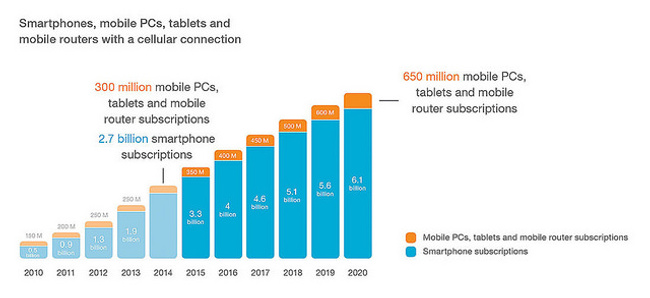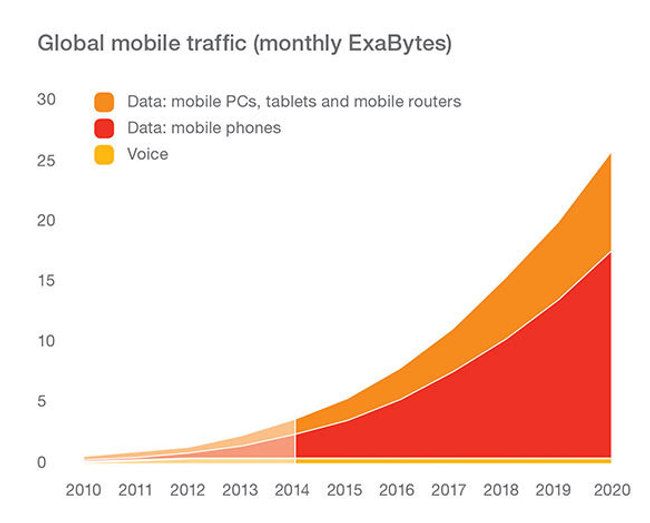By 2020, some 90pc of people on Earth over the age of six will be carrying a mobile phone, a new forecast from Ericsson predicts. At that stage, there will be 6.1bn smartphone subscriptions on the planet.
The latest edition of the Ericsson Mobility Report reveals that the fastest growth for new mobile subscriptions was found in India and China, with 18m and 12m net additions respectively during the third quarter of this year.
In the third quarter of 2014, smartphones represented up to 70pc of all phones sold, compared with 55pc a year ago.
“The falling cost of handsets, coupled with improved usability and increasing network coverage, are factors that are making mobile technology a global phenomenon that will soon be available to the vast majority of the world’s population, regardless of age or location,” said Rima Qureshi, chief strategy officer and head of M&A at Ericsson.
A world connected like never before

“The Ericsson Mobility Report shows that in 2020 the world will be connected like never before,” Qureshi added.
Despite this increased rate of smartphone sales, which will see the addition of an estimated 800m new smartphone subscriptions by the end of 2014, the report reveals there is still plenty of room for growth in the sector.
Smartphones currently account for just 37pc of all mobile phone subscriptions, meaning many users have yet to make the switch to the more feature-rich, internet-friendly option.
The report predicts a strong uptake in the coming years as the number rises from 2.7bn smartphone subscriptions today to the forecasted 6.1bn in 2020.
Video continues to dominate mobile networks: in 4G-dominated networks, it constitutes 45-55pc of mobile traffic, driven largely by increased usage of video streaming and improvements in the mobile video experience.

Ericsson estimates that mobile video traffic will increase tenfold by 2020, ultimately constituting around 55pc of all mobile data traffic in 2020.
5G is expected to be commercially deployed in 2020, and the technology is predicted to have a faster uptake than 4G LTE, just as 4G had a faster uptake than 3G.
The difference here is that, in addition to new radio technologies, 5G will also encompass evolved versions of existing radio access (such as 3G and 4G), cloud, and core technologies to cater for the thousands of new ways that mobile technology will be used. 5G growth will be driven to a large extent by new use cases, especially in machine-type communications.
Smartphone generation image via Shutterstock